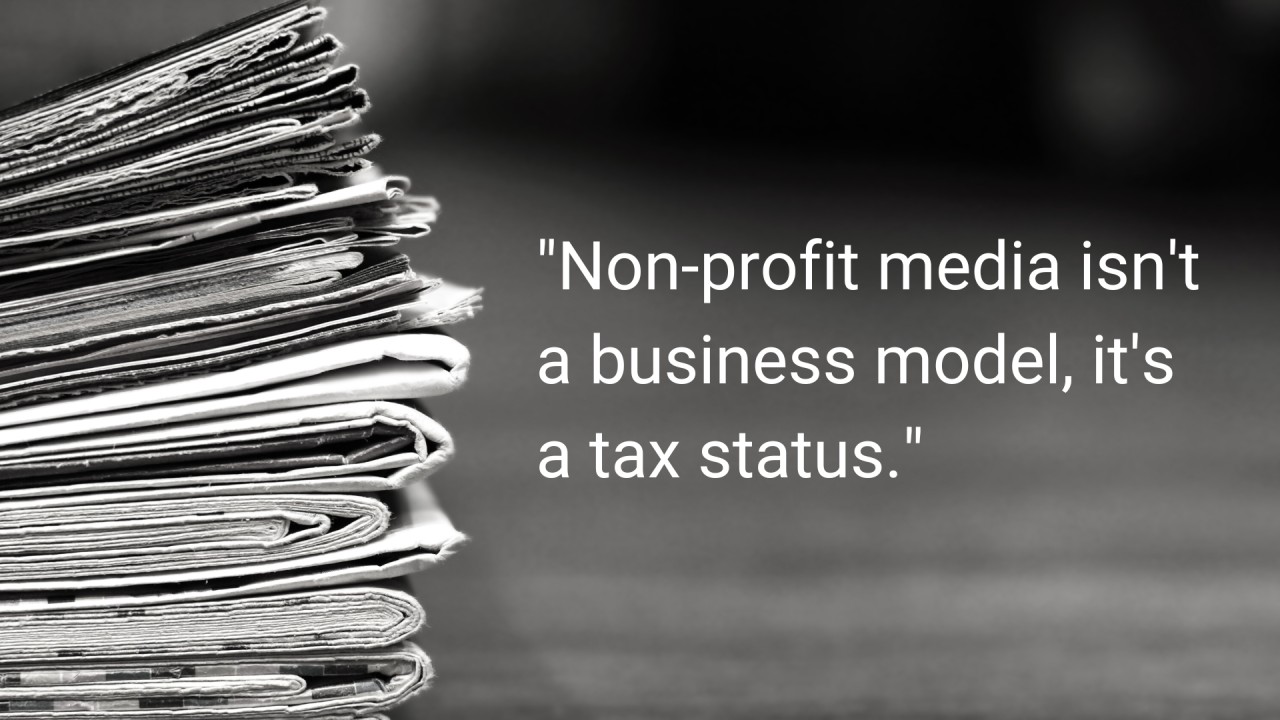One of my favourite media management quotes is from Jim Brady who said that when it comes to building a sustainable business, there are no silver bullets only shrapnel. The first two items in the newsletter today reinforce that both from a strategic view and also from a practical view at the Financial Times. Anita Zielana outlines a great process with three short case studies from independent media from around the world for diversiying revenue streams. One case study that leaped out at me was URL Media, which is a network of BIPOC (US acronym for Black, Indigenous, and people of color) media outlets. They provide support services to this network including audience development, recruiting and philanthropic funding development. All of the examples speak to the creativity that is needed to make a modern media business thrive.
I also like the onion principle of revenue diversification, which recommends that publishers focus on core existing revenue streams and build out from there. This helps a publisher leverage existing capabilities to grow from a solid base.
The FT is a good example of so many solid management techniques - from their North Star framework to their embrace of data. And this has meant a diversified set of revenue streams that mean solid results.
In this week’s Pugpig Media Bulletin, we covered a new report from the Reuters Institute for the Study of Journalism that added some qualitative data to their quantitative data on subsciption trends. While the cost of living crisis (inflation) was the top reason that people cancelled their subscriptions (especially in the UK), the second biggest reason is that people didn’t perceive value from the subscriptions. They simply didn’t develop a habit of using it. The importance of good subscriber onboarding and building habits with new subscribers immediately is a theme that we touch on often at Pugpig Consulting.
This week in Google: Shifts in podcast distribution and giving publishers a choice on LLM training
Podcasting is in transition right now, with podcast publishers and distributors making changes. Google has announced that it will retire its podcast app next year and point users to YouTube Music. Users have long been using YouTube to listen to or even watch podcasts so this leans into audience behaviour.
Digital publishing professionals in my social media feeds were noting that Google had released a tool that allows them to block their sites from being scraped from generative AI.
I am highlighting this expansion of a local news provider in the US because it provides a great playbook of community-centered engagement and design. They have held house parties and other community meetings that not only gives people a voice in their future direction but also builds relationships between the publisher and community.
In one of the first battles in the rising AI economy, Hollywood writers have largely achieved their aims. It sets a good standard on how workers can respond to AI, but it is a question whether other workers that will be affected by AI such as marketers and journalists will have the same bargaining power.
Social Media: Canadian journalism students and nonprofit outets suffer in battle with platforms
Canada passed a bill earlier this year that required digital platforms like Google and Meta to negotiate with news publishers on payments for their content. Meta decided to block all Canadian news content rather than comply with the leigislation. Critics of the legislation said that any benefit from it would flow to major publishers but leave small publishers out. And now small publishers such as student and nonprofit community outlets are cataloguing the impact of the legislation on their efforts to reach audiences. “It’s having an outsized effect on small publishers. Gizmodo spoke to half a dozen student journalists and station managers who say the ban on news links, intended to hurt big-name publishers, has instead hamstrung their vital ability to fundraise, recruit volunteers, or engage in community outreach.”
One of the dangers of AI was that it could be used to quickly and cheaply generate disinformation and scams. Social platforms are rushing to develop new rules to manage this tsunami of dangerous content. It’s going to battle of attrition between the platforms, the propagandists and the grifters.


































